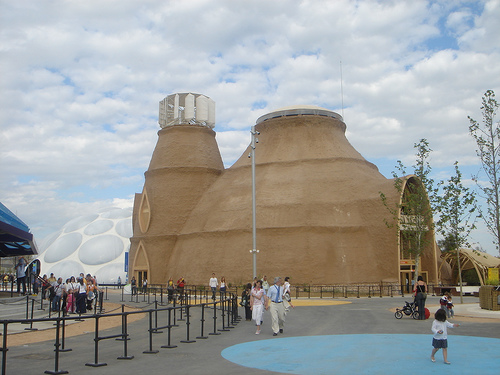Dr. Paul Jaquin at www.historicrammedearth.co.uk has revamped and improved his website. Visit the Historic Rammed Earth website for lots of information about the science of rammed earth and earth buildings, and studies of rammed earth in Nepal, Morocco, Spain and India.
LEHM 2008 Conference Programme
The LEHM 2008, the 5th international trade fair and conference on building with earth, will take place from 9th-12th October 2008 in Koblenz on the Rhine in Germany. Organised by the Dachverband Lehm e.V., the German Association for Building with Earth, the conference takes place every four years in a different earth building region in Germany and, in addition to the conference, includes a trade fair and field trips to modern as well as traditional earth buildings in the region.
Aimed at practitioners and manufacturers, students and educators, architects and academics as well as all who are interested in the potential of earth as a sustainable building material, the LEHM 2008 conference and trade fair offers an opportunity to see, discuss and keep up with innovative developments in the field.
The conference will take place in the historic Ehrenbreitstein Fortress in Koblenz, which overlooks the junction of the rivers Rhine and Mosel, and is organised in cooperation with the Landesmuseum Koblenz and the Koblenz Chamber of Crafts.
The full conference programme and details of the accompanying poster session, trade fair, field trips and social activities are available online: www.dachverband-lehm.de/lehm2008/index_en.html
All who are interested are advised to register early as the capacity of the historic building is limited. Participants can register directly online from the website or alternatively download a PDF file to print out and fax.
A Mudbrick City Wall at Hattuša

Situated in Central Anatolia, Hattuša remained the capital city of the Hittites from 1650/1600 to around 1200 BC. Here, as recently as 2003 to 2005, the German Archaeological Institute has rebuilt one stretch of the mudbrick city wall. The scope of this project in experimental archaeology has been to recreate a part of the wall using the same materials the Hittites had at hand when they built their original walls so long ago. Each step necessary for the construction was fully documented so as to enable us to assess not only the amount of building materials required but also the manpower and time the Hittites must have invested in the various tasks of construction.
This volume presents the results gleaned from this documentation. From the production of the first mudbrick to the dedication of the finished structure, each and every undertaking has been described in detail and is presented here accompanied by 573 illustrations.
For more information visit:
German Institute of Archaeology (In english, german and turkish)
Hattuscha-webpage (in English, German and Turkish)
This book is published also in German and Turkish:
Die Lehmziegel-Stadtmauer von Hattusa
Bericht über eine Rekonstruktion
ISBN 978-975-807-194-7
Hattusa Kerpic Kent Suru
Bir Rekonstrüksiyon Çal??mas?
ISBN 978-975-807-193-9
El Faro: The Citizens’ Initiative Pavilion
The architectural project of the Citizens’ Initiative Pavilion building is the work of the architect Ricardo Higueras for the Zaragoza Expo 2008.
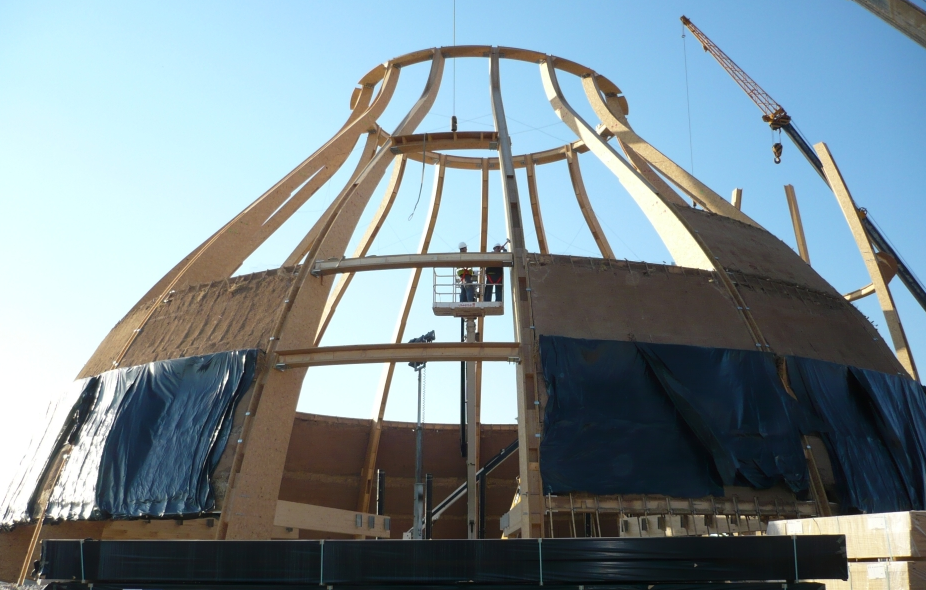
The pavilion building will be based on energy efficiency, recycling and sustainability. Both the building’s shape and its use are based on the traditional ceramic pitcher. The materials used are natural and come straight from the earth: straw, wood, and clay. Prefabricated clay-plastered panels were attached to a super-structure to enclose the pavillion. More photos in the photo gallery. [ Previously ]
Mediterra 2009: 1st Mediterranean Conference on Earth Architecture

Mediterra 2009: 1st Mediterranean Conference on Earth Architecture will take place 13-16 March 2009 in Cagliari, Sardinia, Italy
Aims
Mediterra 2009 aims principally to state the art of research, to study recent achievements in heritage conservation and architectural design, to increase university and professional training and to gather the network activities developed in the Mediterranean region.
Contribution
This 1st Conference will include specialists from throughout the Mediterranean region. It will also have a transdisciplinary contribution that will bridge natural sciences, social sciences, and professional practices. A new global challenge requires a broad definition of a new discipline, with earth architecture at the crossroads of the sciences. The Mediterranean Region, with its history of many cultures and civilizations, now emerges as the core of new political and societal challenges being shared among Europe, North Africa and the Middle East.
Program
Friday 13th – Opening of the Conference (Presentations related with the 1st Theme)
Saturday 14th – Conference (Presentations related with the 2nd and 3rd Themes). Official dinner.
Sunday 15th – Conference and Closure (Presentations related with the 4th and 5th Themes)
Monday 16th – Visit to earth architecture in Sardinia
Organizers
DiARCH Facoltà di Architettura, University of Cagliari
ESG Escola Superior Gallaecia
CRATerre-ENSAG International Research Center and Unesco Chair earth architecture
RAS Regione Autonoma della Sardegna
Under the Aegis of
UNESCO World Heritage Centre
ICCROM International Centre for the Study of the Preservation and Restoration of Cultural Property
ICOMOS-ISCEAH International Scientific Committee on Earthen Architectural Heritage
GCI Getty Conservation Institute
Important Dates
30 June 2008 – Abstract submission
31 July 2008 – Notification of abstract’s acceptance
30 September 2008 – Sending of full paper
15 November 2008 – Notification of paper’s revision
15 December 2008 – Final paper delivery
Themes
1. Earth-building cultures and traditional architecture
2. Archaeology, history and anthropology
3. Conservation of cultural heritage
4. Research about architecture, town planning and cultural landscape
5. Academic teaching and professional training
Languages
French & English (with simultaneous translation)
For more information download the conference brief or contact:
Mediterra 2009 – Facoltà di Architettura – DiARCH
Piazza d’Armi 16 – 09123 Cagliari – Italy
E-mail mediterra@unica.it
Site http://people.unica.it/mediterra/
Tel. (+39) 070 6755807
Fax (+39) 070 6755816
Kerpic ’08

The International Conference, Kerpic ’08: Learning from earthen architecture in climate-change will be held at the Cyprus International University, in Lefkosa – Northern Cyprus, on the 4th and 5th of September 2008. The focus of the conference has evolved from quality of life in earthen architecture, environmental and health care, towards disaster prevention. We hope that it will bring together the related disciplines of architects and engineers, on material, construction, marketing and environmental science, to create database, technology watch and strategy.
Cyprus is the third largest island in the Mediterranean. Cyprus has been inhabited since the Neolithic period in history by different cultures. Stone and earthen materials are characteristics of Cyprus vernacular architecture and the Island is especially famous for its earthen traditional houses and villages.
A workshop will be organized on site which will cover the restoration of a local earthen building and the construction method of Alker (gypsum stabilized earthen material) where all the participants can take part. For more information visit the conference website: http://www.kerpic.org/2008/
Library and Archive at Douai Abbey
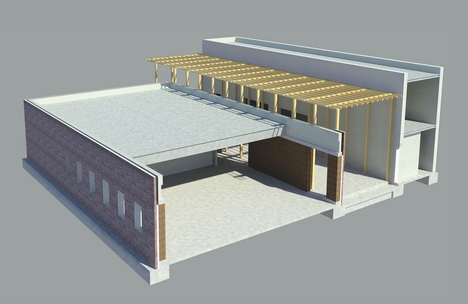
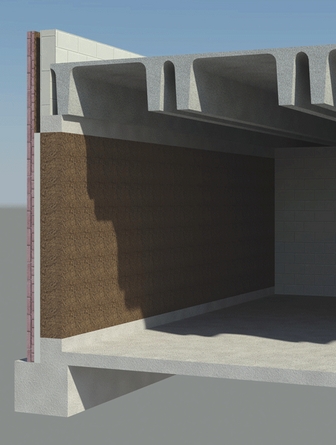
Architect David Richmond & Partners and structural engineer Price & Myers are creating a rammed earth wall using local soil for a new library and archive at Douai Abbey. The proposed 300mm-thick, 2.7m-tall earth walls, which will be built on a 100mm-tall concrete plinth, offer the right amount of thermal mass to ensure a stable internal temperature. When built, it will be the only library in the UK to use rammed earth technology. It is also the first time that either the architect or the structural engineer have worked with rammed earth.
Save the Heritage of Hassan Fathy
Save the Heritage of Hassan Fathy is an International Association based in Geneva (Switzerland), founded in February 2008 to safeguard the heritage of the Egyptian architect, Hassan Fathy.
His works constitute a patrimony of outstanding value which belongs to the cultural world heritage. The Association’s objectives are the following:
- Raising the awareness of the public opinion about the importance of the work of the Egyptian architect
- Providing a platform of exchanges between the concerned Institutions (public and private) and Universities
- Promoting protection and conservation projects to safeguard this outstanding heritage
Arcitetture di Terra in Sardegna
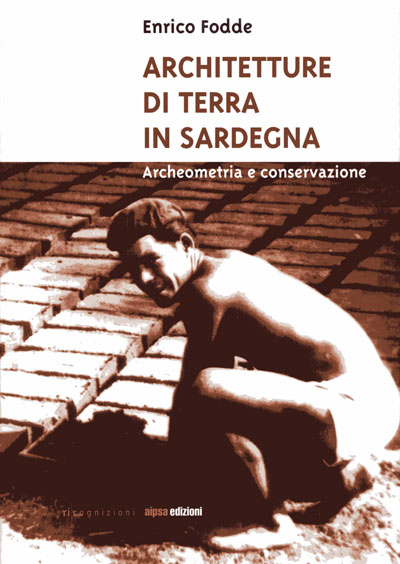
The book Arcitetture di Terra in Sardegna, the first of its kind on the subject, presents the results of new research into Sardinia’s indigenous tradition of earthen architecture. Author Enrico Fodde explores the cultural context of these buildings and describes practical techniques for the conservation of this unique and rapidly diminishing heritage. By interviewing craftsmen with first hand knowledge of working on these structures and by means of laboratory analysis of the materials involved — principally mud brick and lime — Dr Fodde explores the mechanisms of decay and proposes methods suitable for repairing buildings in need of restoration. Case studies are presented to show how different methods of repair have worked out in practice. Finally, consideration is also given to ways in which the results of this work might form the basis of research into other building traditions in the Mediterranean basin and elsewhere.
Chapel of Reconciliation
Built by architects Peter Sassenroth und Rudolf Reitermann in 1999, this small chapel made of rammed earth replaces the former Church of Reconciliation, a historicist church built in 1894 which happened to be situated on the death strip when the Berlin wall was erected in 1961. The old church stood there vacant and isolated, abused as a guarding tower for East German border patrol, until it was finally blown up by East Germany in 1987 – just two years before the wall eventually was torn down itself. the community of the former church decided it wanted to have its church back. The completed chapel is enveloped by a wall made of rammed earth, composed out of clay and smaller pieces of bricks of the exploded church. For more information visit the Chapel of Reconciliation home page.

